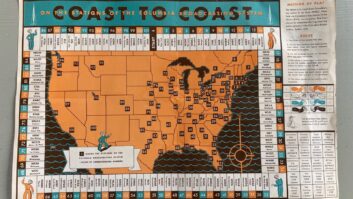Shaping radio today and tomorrow
Mar 1, 2004 12:00 PM, By Kari Taylor, associate editor
Do you remember?
Introduced in the early 1960s, the Collins four-channel 212Z-1 remote amplifier’s design was influenced by answers to a questionnaire mailed to a sample of broadcast stations across the country. Its features included a tone oscillator for line-level setup, an auxiliary output for public address feed and a maximum gain of 90dB. It could be powered by 115Vac or batteries, with an automatic changeover when ac power failed or when it was restored. Instead of composition-type faders, step faders were used.
All terminals and jacks were located at the back of the unit. Four microphones could be accommodated, while one or two headsets could be plugged into the monitor jacks. When loud speaker monitoring or a feed for a local PA was needed, the PA terminals could be used. An individual gain control allowed the operator to handle the program and simultaneously ride gain on the PA system.
That was then
On March 15, 2003, On the Air!, a traveling broadcasting exhibit, opened at the Grand Traverse Heritage Center in Traverse City, MI. Produced in cooperation with the Michigan Association of Broadcasters, On the Air! tells the story of the birth and growth of broadcasting in Michigan, presenting the people, the events and the technology that shaped radio and television in the state.
The exhibit includes more than 40 artifacts dating from 1910 to the 1980s; a Remembered Radio section where visitors can hear the sounds of each broadcast decade; and a hands-on sound effects section. There is also an On the Air! Wall of Fame that acknowledges outstanding people who have earned notable places in Michigan’s broadcasting history.
From March 15 to June 6, 2003, more than 1,500 visitors toured the exhibit before it moved on to its next destination, the Port Huron Museum.










